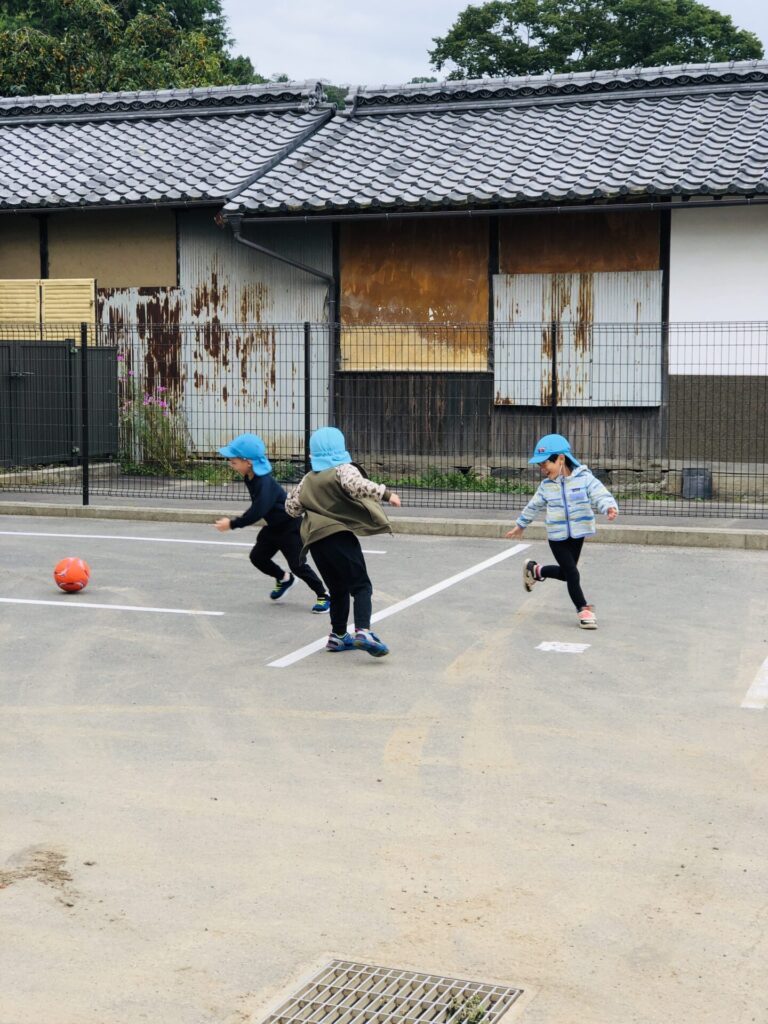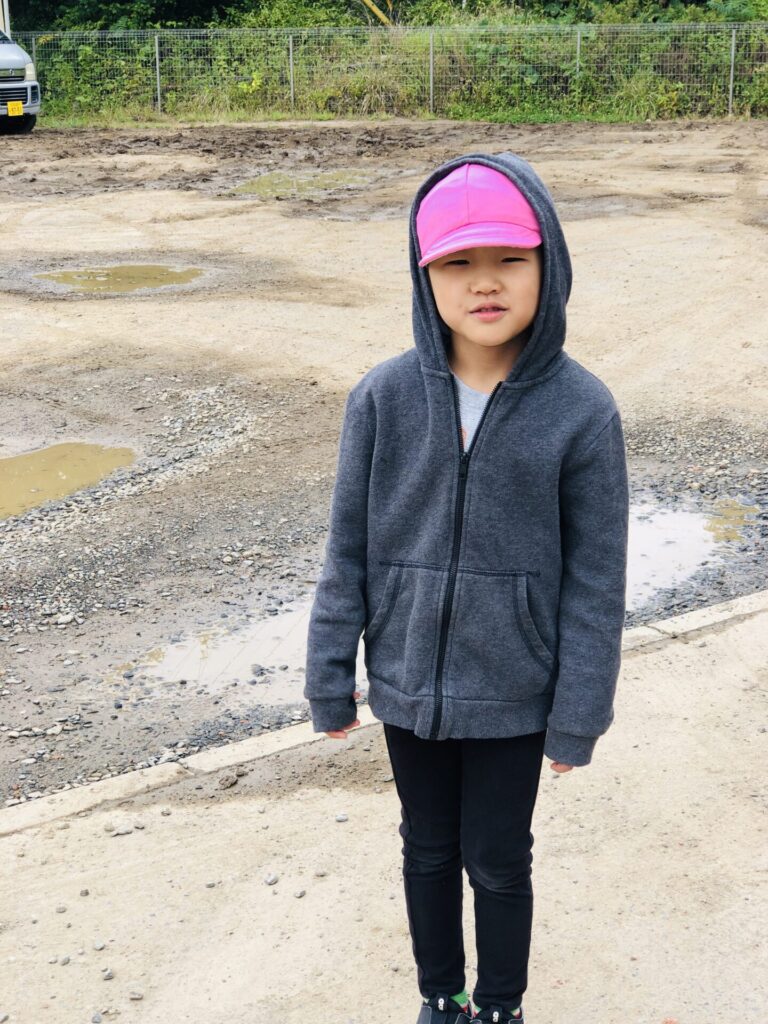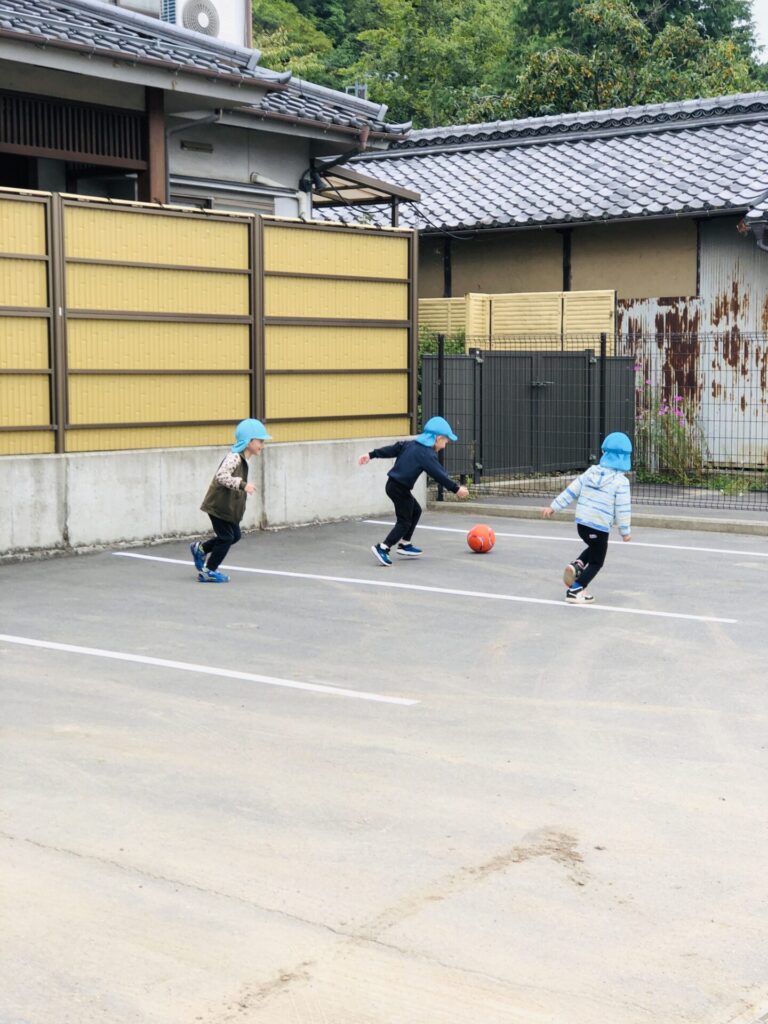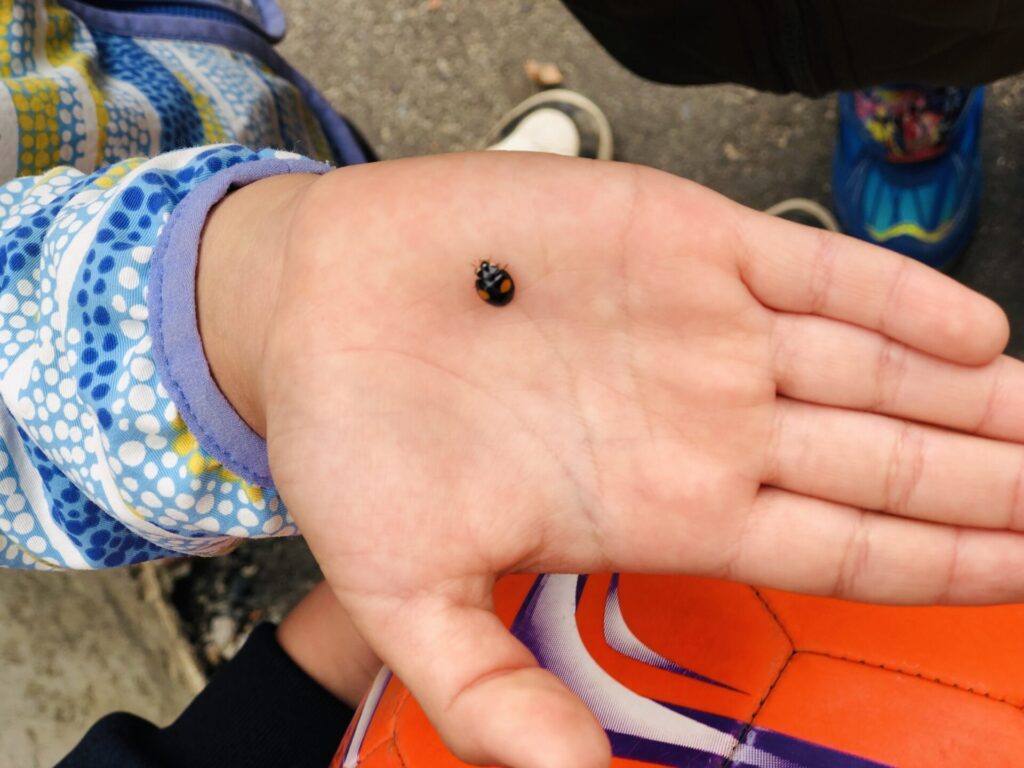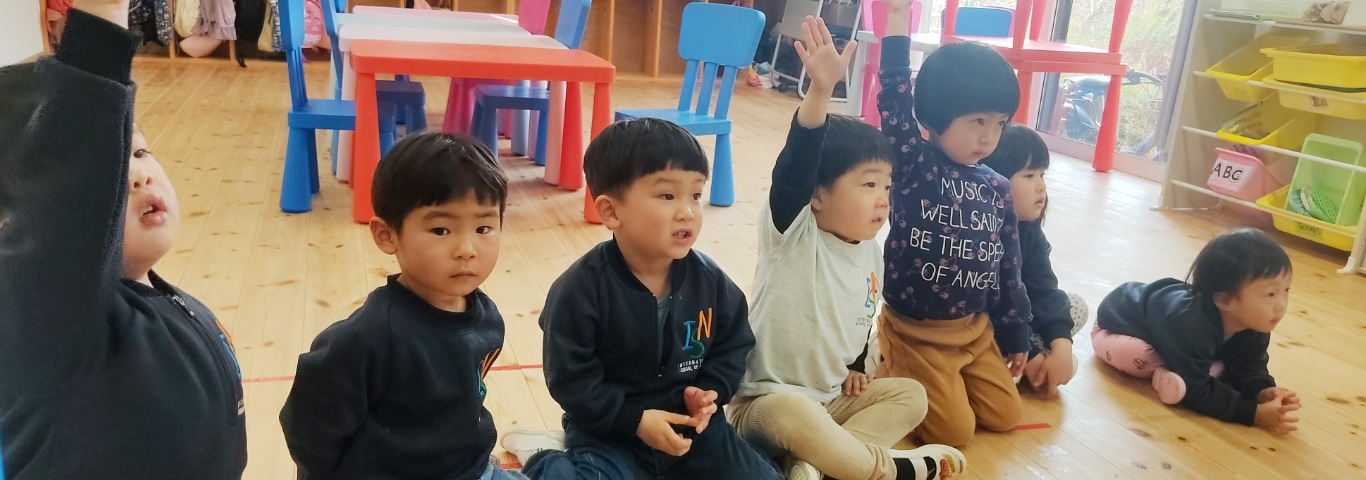“I am sad today…I don’t want to say goodbye to the snails…” echoes one of the children in class. It breaks my heart to hear such a little wish from a child. I understand parting is probably one of the most difficult things in life, unfortunately it is a learning process we all have to go through. With heavy hearts, we carried close to 100 something snails, eggs and all, and dragged our feet towards the nearby shrine. Each child held a few baby snails and laid them gently on the leaves, among the bushes, making sure the snails were safe and snuggled among the moist soils. “Goodbye snails, bye bye..” the children’s voices echoed in the air. Such a heart wrenching feeling, nonetheless we pray and hope that they all find a perfect home before the bitter winter arrives. We kept 10 newly hatched baby snails in our science area for the children to take care of and watch them grow. We hope this will make up the loss they experienced this week.
「今日は悲しい…カタツムリにさよならを言いたくない…」クラスの子どもたちの一人が嘆きました。子どもからそんな嘆きを聞くと胸が張り裂けそうです。きっとみんなは、別れはおそらく人生で最も難しいことの1つであることを理解しているのでしょう。 残念ながら、別れは私たち全員が経験しなければならない学習プロセスです。重い心で、100匹近くのカタツムリや卵を神社まで運びました。子どもたちはそれぞれ数匹のカタツムリの赤ちゃんを手で茂みの中の葉の上にそっと置き、カタツムリの卵は湿った土に放し、これから安全に孵化できるようにしました。 「さよならカタツムリ、さようなら…」子供たちの声が空中に響き渡りました。とても悲しい気持ちですが、厳しい冬が来る前に、カタツムリたち全員が自分の家を見つけられることを祈っています。これからも子どもたちがカタツムリの世話をしてその成長を見守ることができるよう、10 匹の孵化したばかりのカタツムリの赤ちゃんをサイエンスエリアに保管しました。

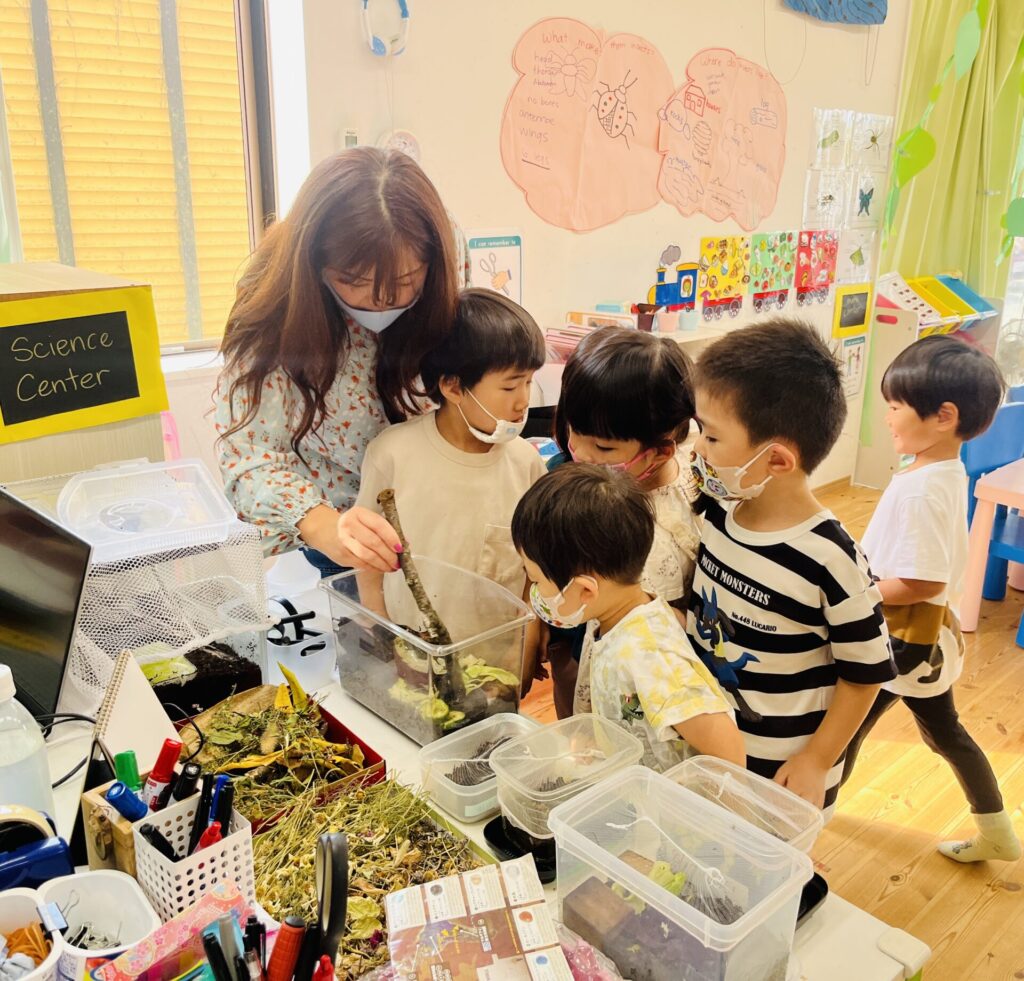
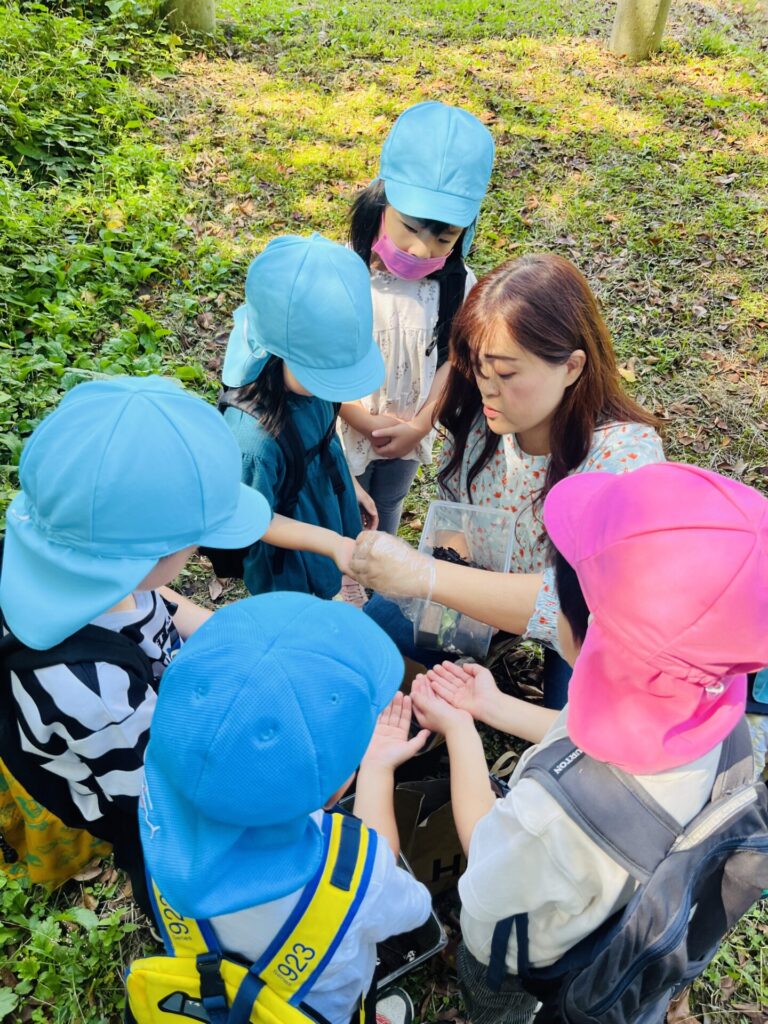
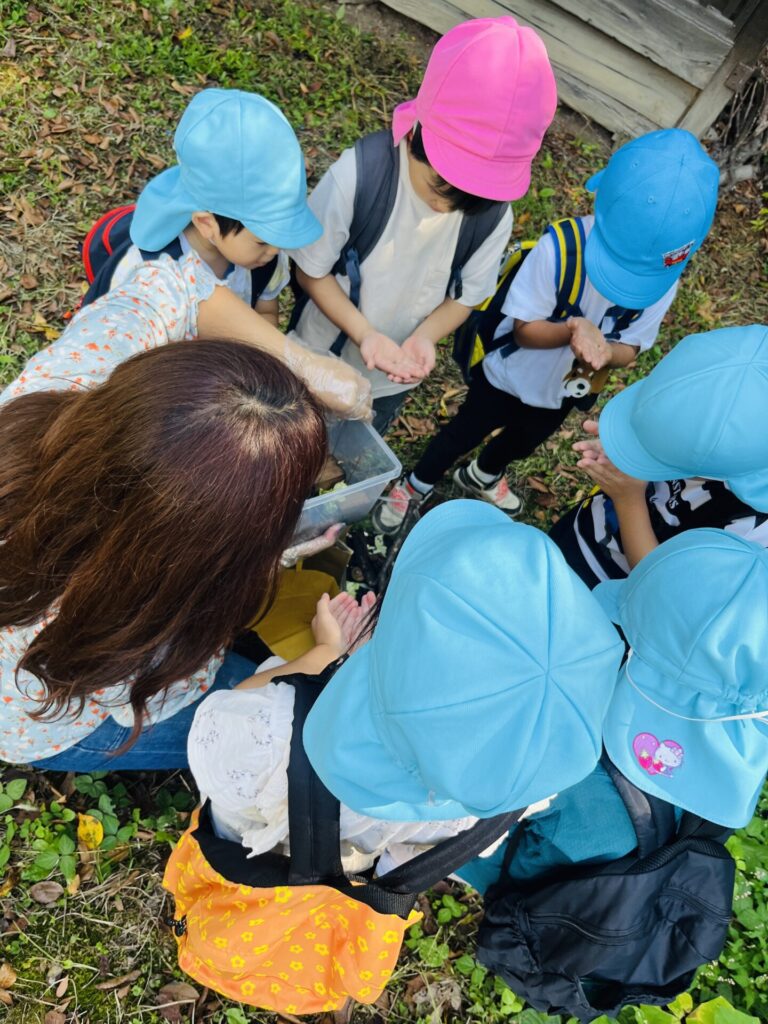
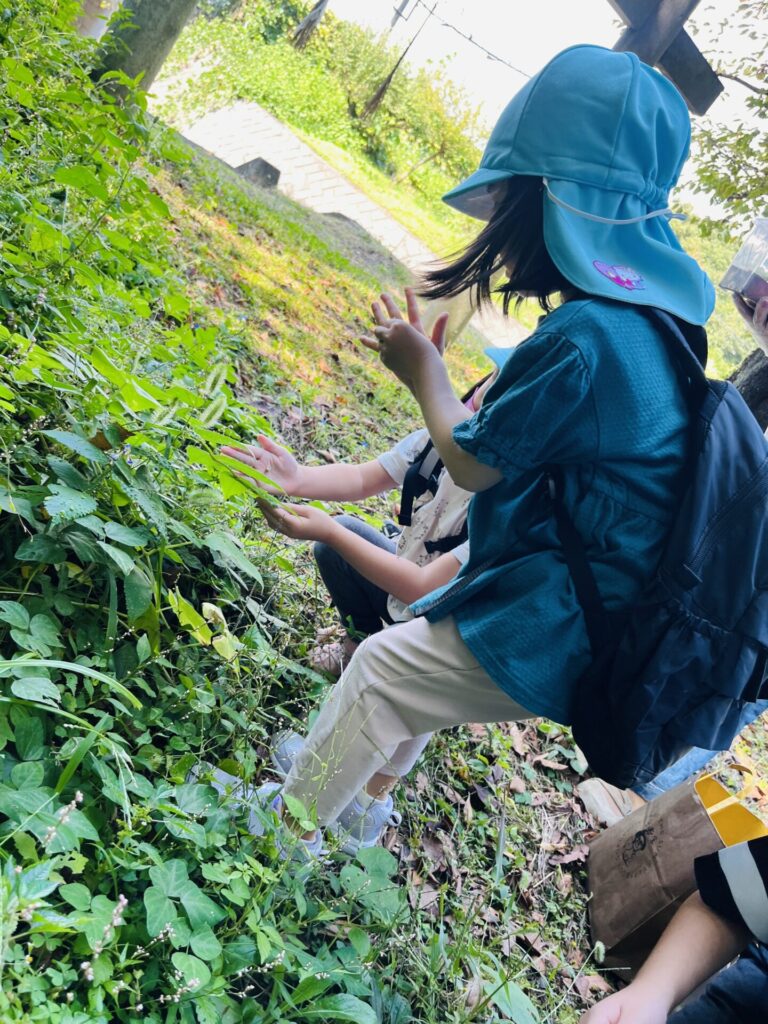
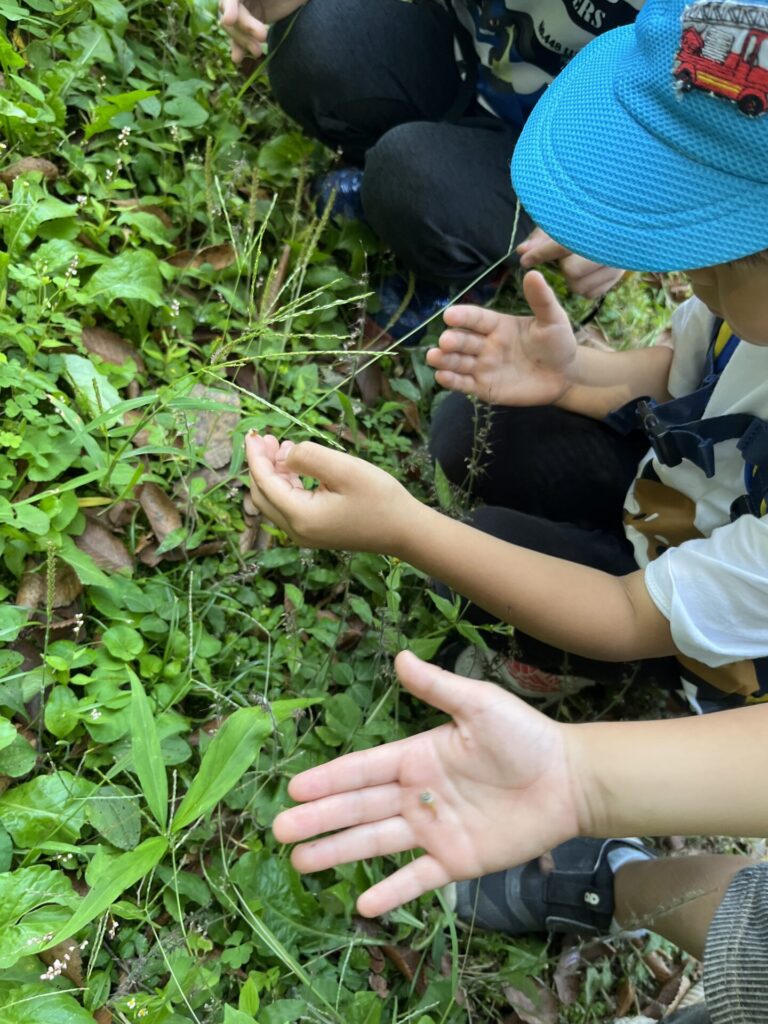
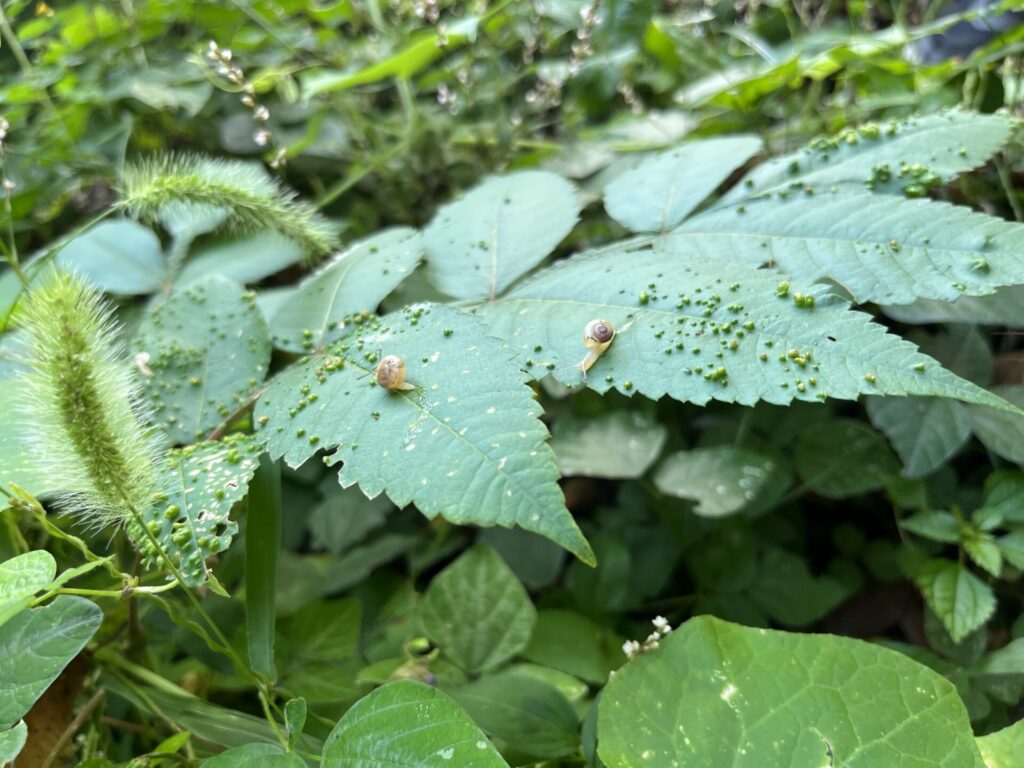
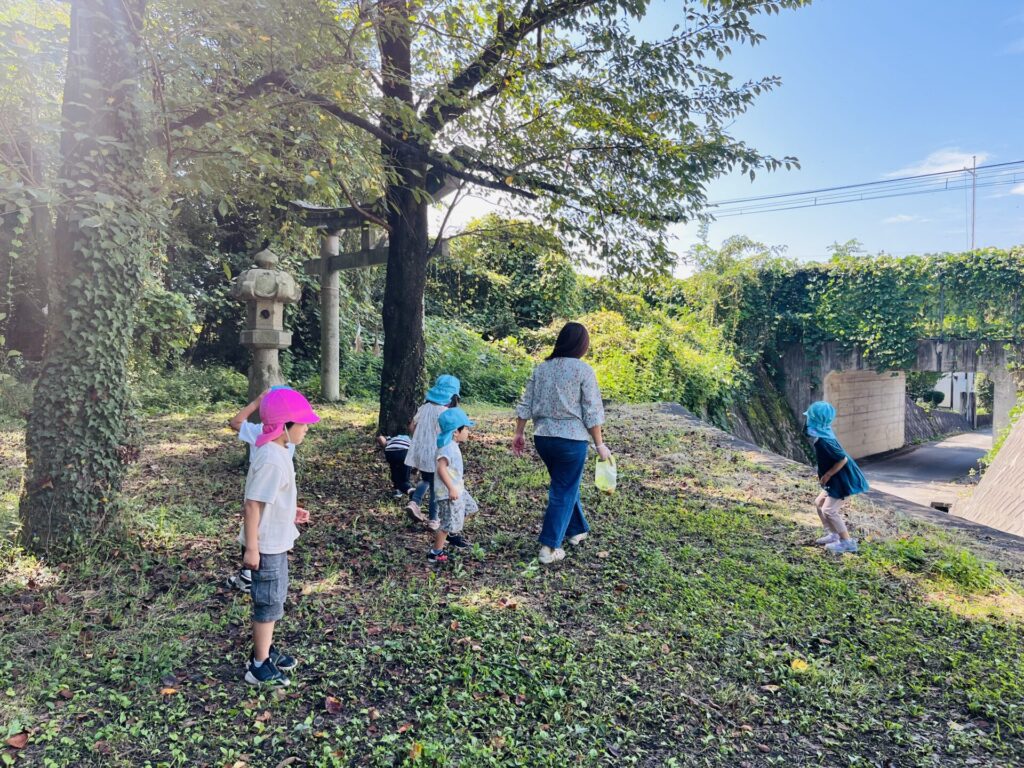
The drill of phonemic awareness continued this week as the children deepened their understanding of the onset and rime blendings. By working with word family -in, the children made five CVC words. Furthermore, we reinforced their learning by matching the onset and rime cards to make -in words. Lastly they practiced on their own by gluing the letters to make words that matched the pictures.
音素認識のドリルは今週も続き、子どもたちはオンセットとライムのブレンドについての理解を深めました。「in」の単語ファミリーを使って、子どもたちは5つのCVC単語を作りました。さらに、オンセットカードとライムカードを一致させて言葉を作ることで、みんなの学習をより深いものにしました。最後に、文字をのりで貼り合わせて、絵に合う単語を作る練習も自分たちで行いました。


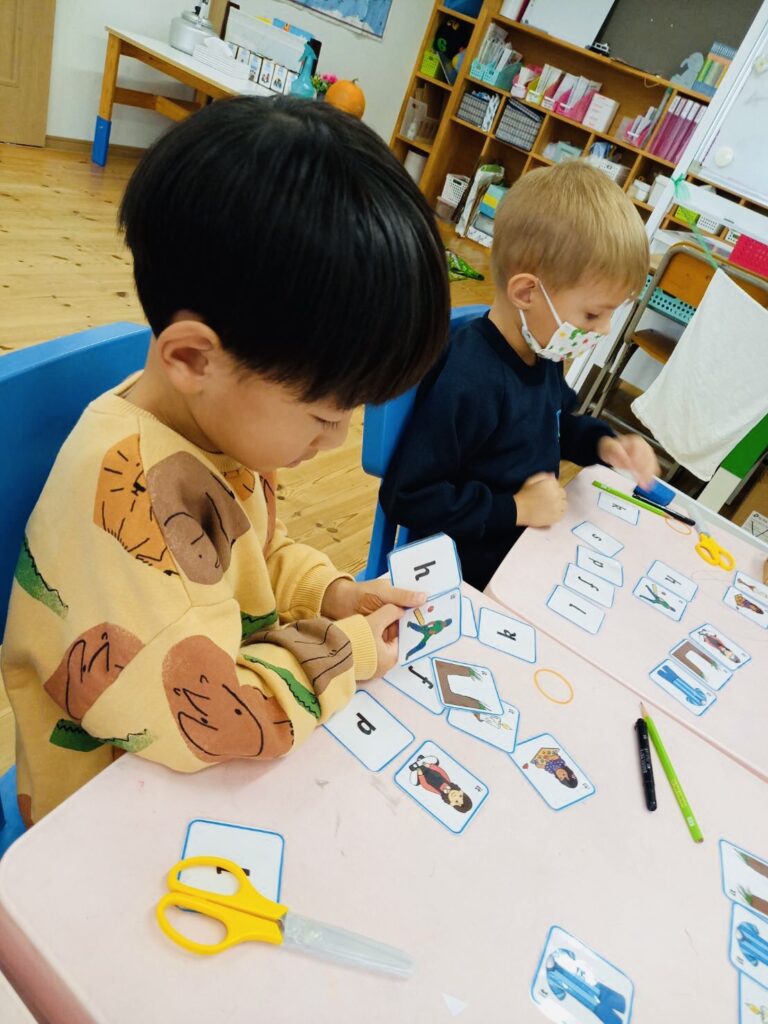
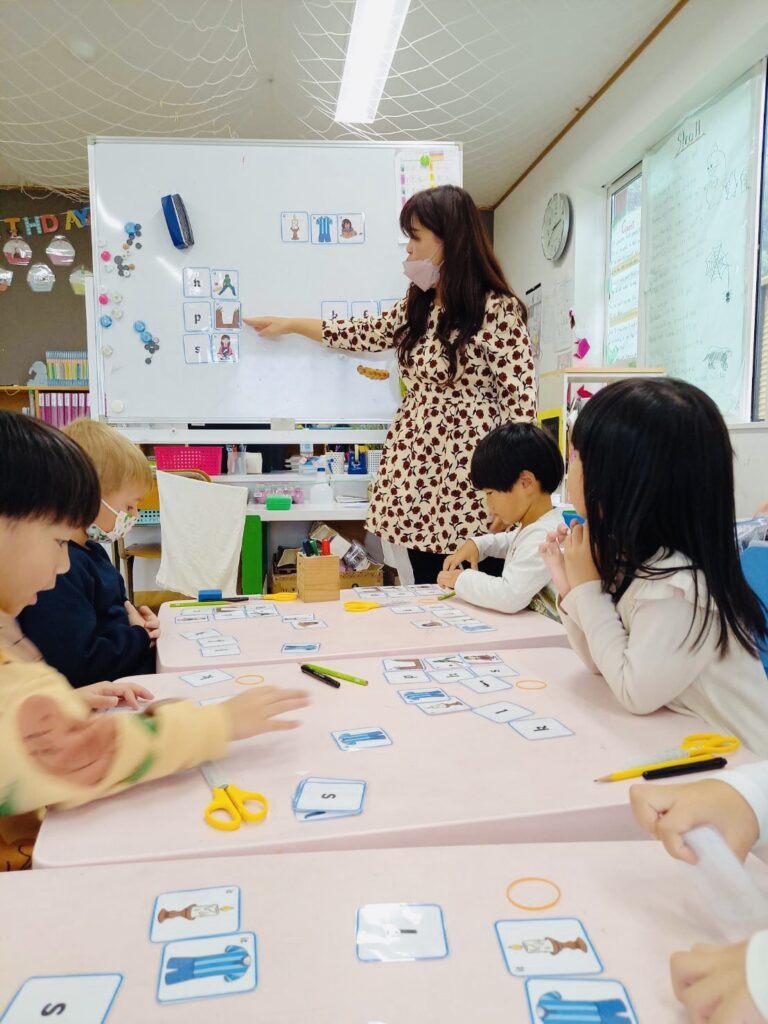
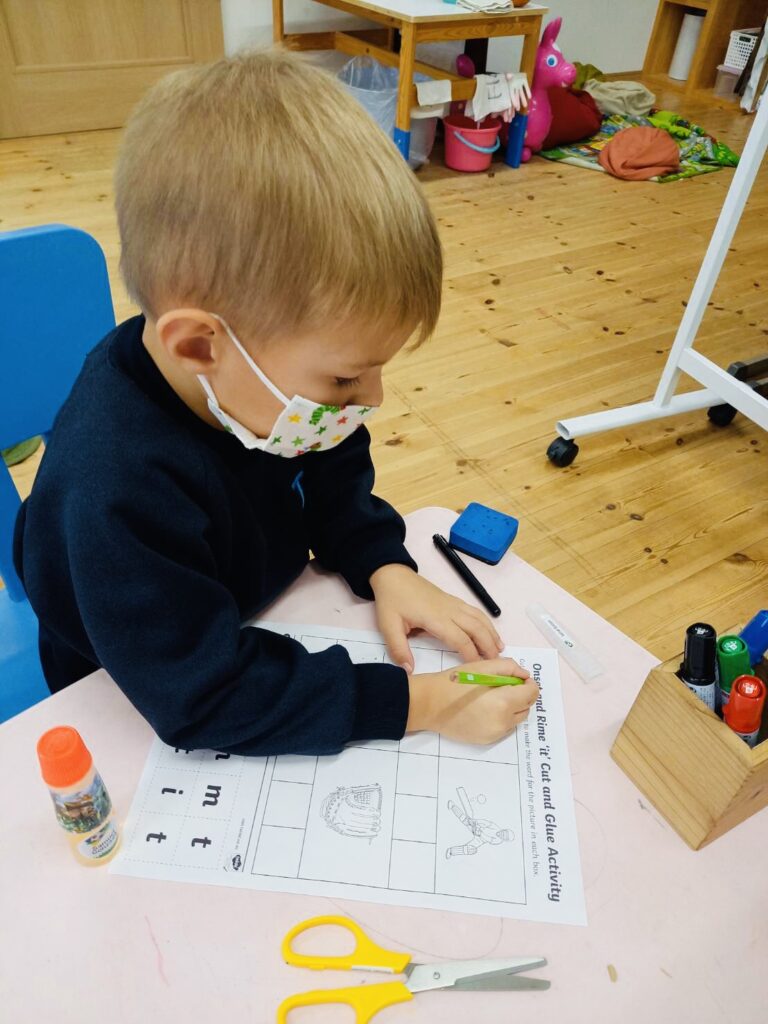


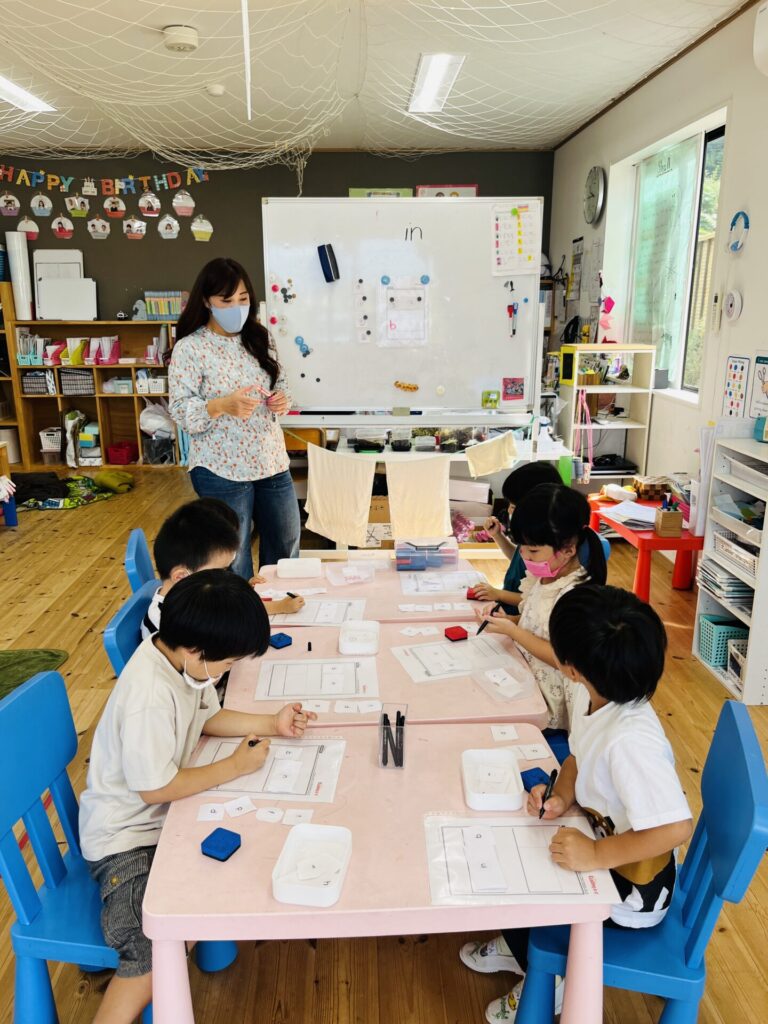
This week during workstation the children learned about the anatomy of a pumpkin by using their senses. In science it is all about the touching, smelling, tasting and seeing. After the initial discussion, we talked about how a pumpkin consists of stem, leaves, skin, flesh, pulp and seeds. We cut open the pumpkin and had the children smell it, some loved it while others shied away. It is an American tradition to visit pumpkin patches in the fall, pick our pumpkins and bake pumpkin pies for the Thanksgiving holidays. My family tradition is to roast the seeds with butter and salt, and stew the pumpkin flesh with brown sugar! I hope you can try some of the scrumptious pumpkin recipes at home!
今週のワークステーションでは、子どもたちはカボチャの解剖学について学びました。サイエンスでは、触ったり、嗅いだり、味わったり、見たりすることが必要です。まずはクラスディスカッションで、カボチャがどのように茎、葉、皮、果肉、種子で構成されているかについて話し合いました。私たちはかぼちゃを切り開き、子どもたちに匂いを嗅がせました。秋にパンプキン パッチを訪れ、パンプキンを選び、感謝祭の休日にパンプキン パイを焼くのはアメリカの伝統です。私の家族の伝統は、種をバターと塩でローストし、かぼちゃをブラウン シュガーで煮込むことです!おいしいかぼちゃのレシピをご家庭でもお試しいただければ幸いです。

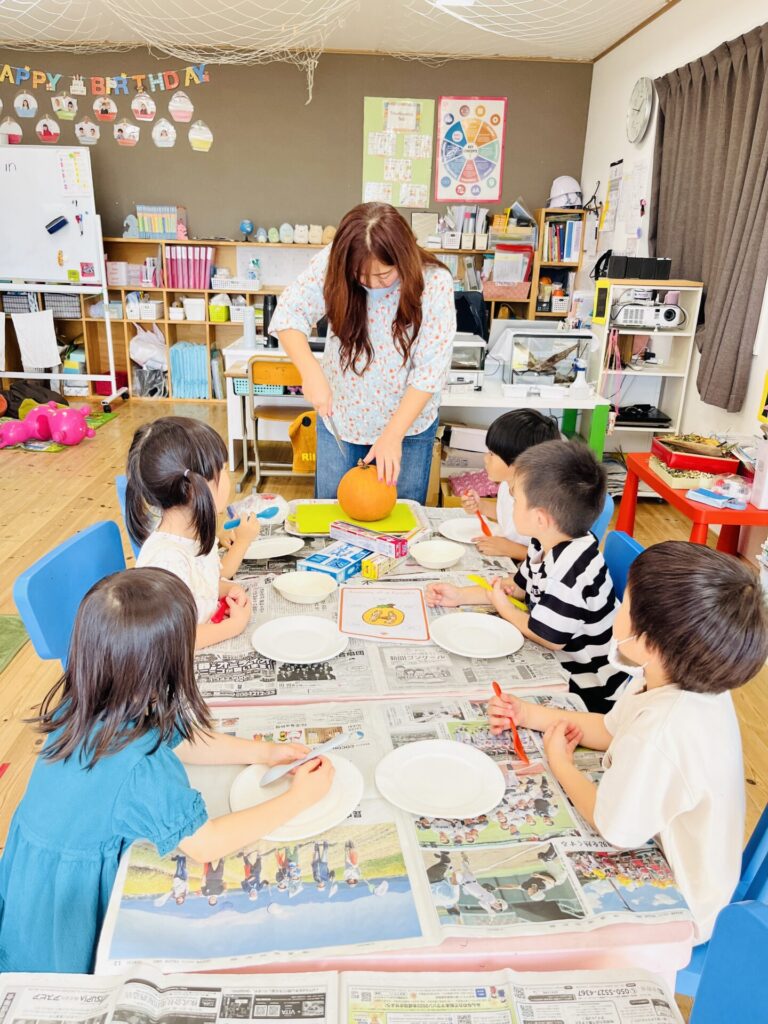
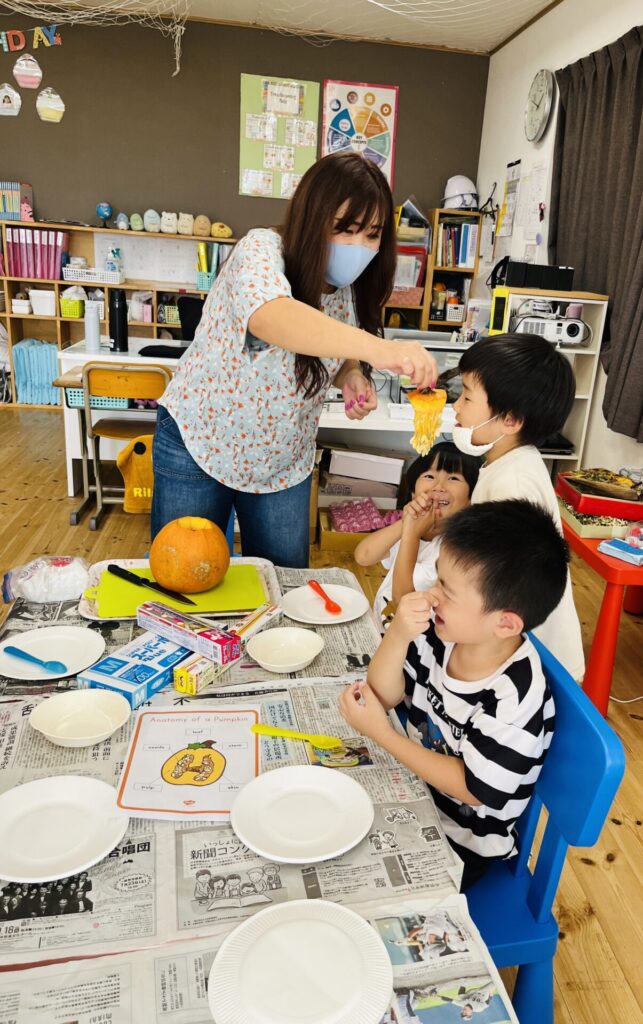
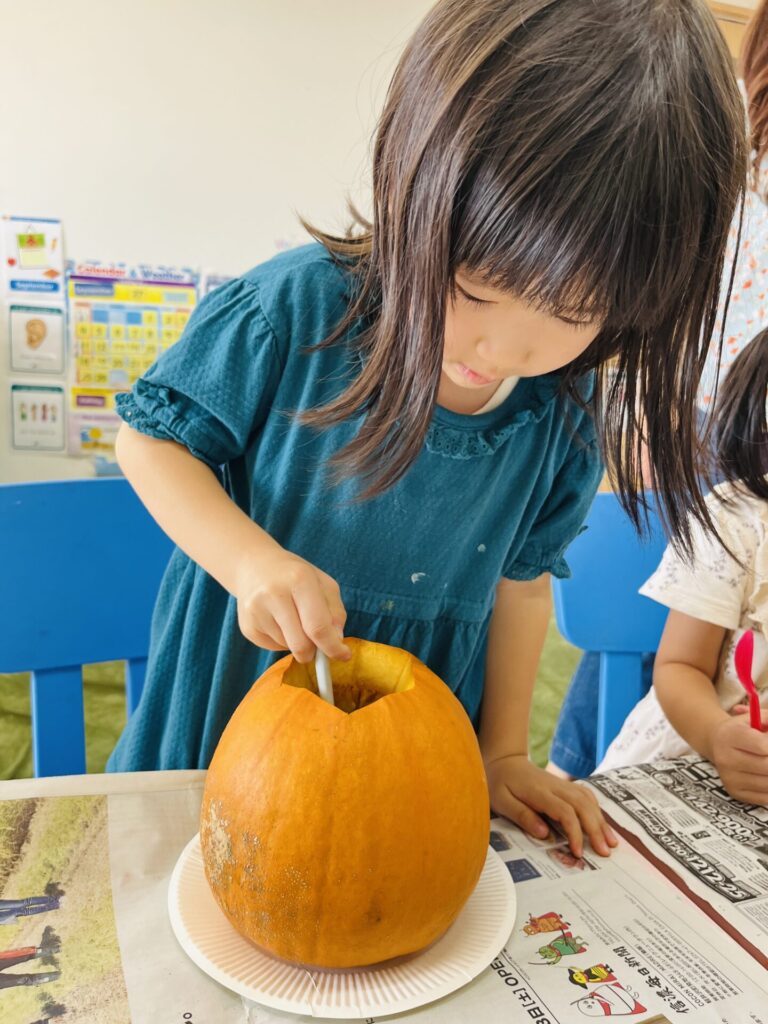
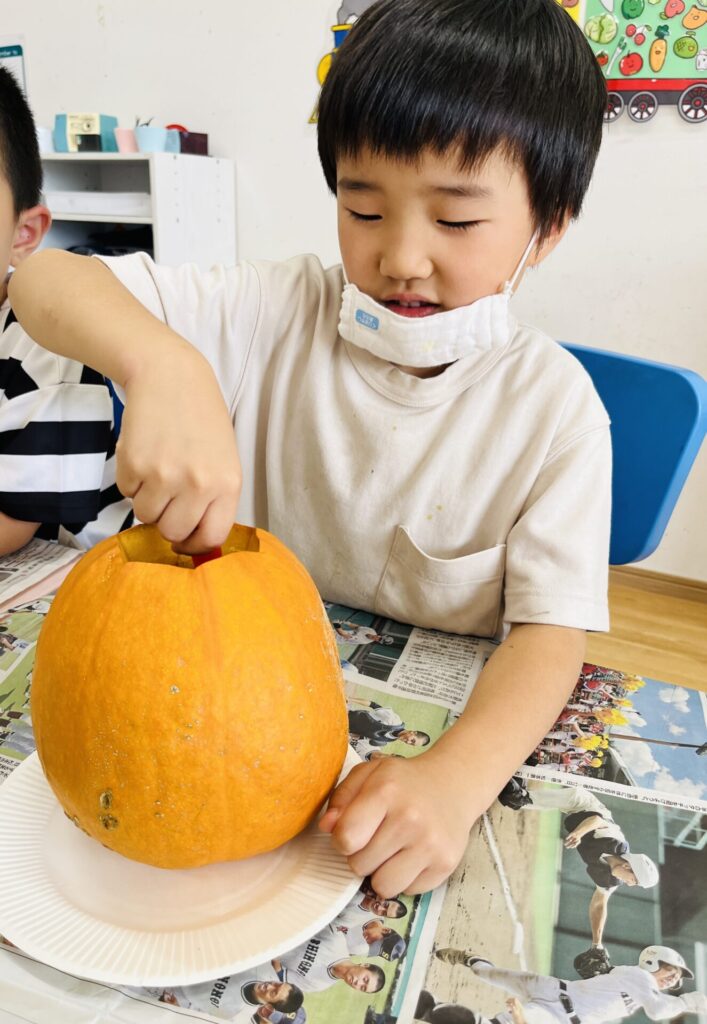
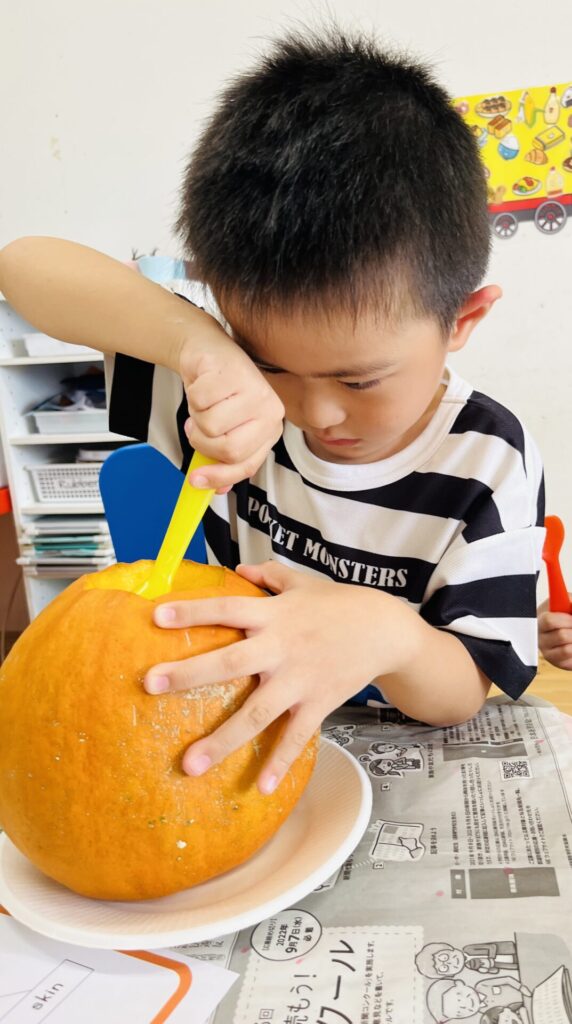

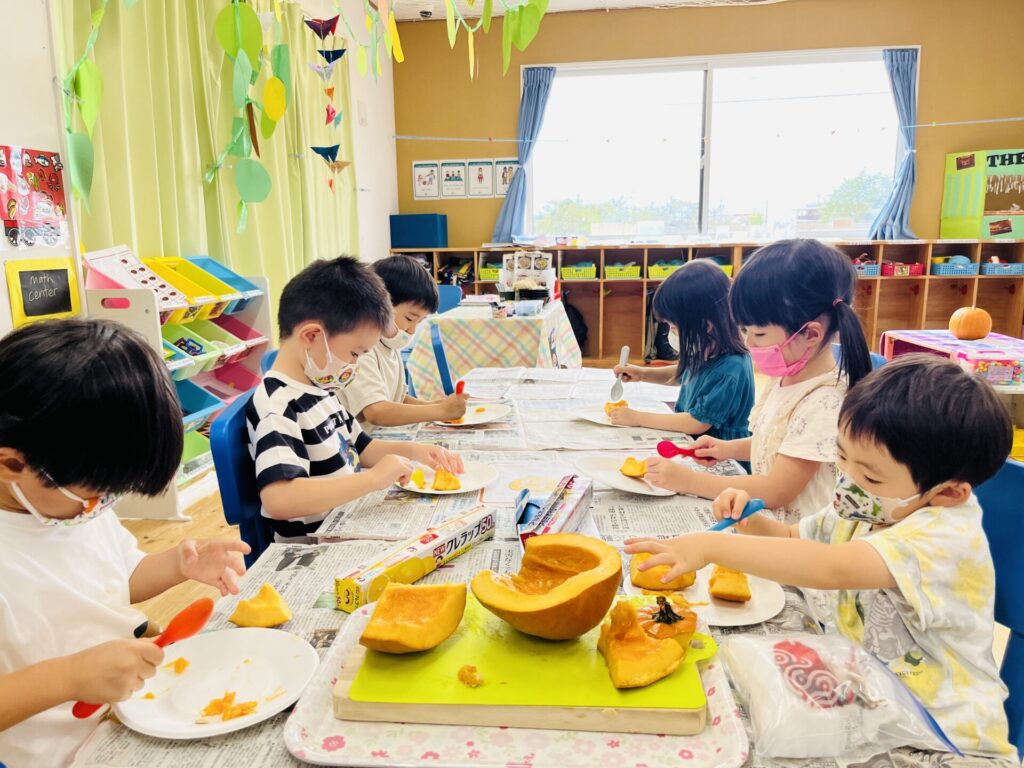
We are loving this crisp and cool air! This week the children had fun running around outside, catching bugs, playing police and robber tag games, and kicking some balls! We also had a stranger’s drill and had the honor of a Matsumoto police officer visiting us to explain how to handle strangers outside of school if we ever encountered one.
私たちは、このさわやかでひんやりとした空気が大好きです!今週、子どもたちは外で走り回ったり、虫を捕まえたり、警察や強盗のタグゲームをしたり、ボールを蹴ったりして楽しんでいました!不審者の対応についての訓練も行いました。松本警察署から警官にお越しいただき、園の外で不審者に遭遇した場合の対処方法を分かりやすく説明してくれました。
